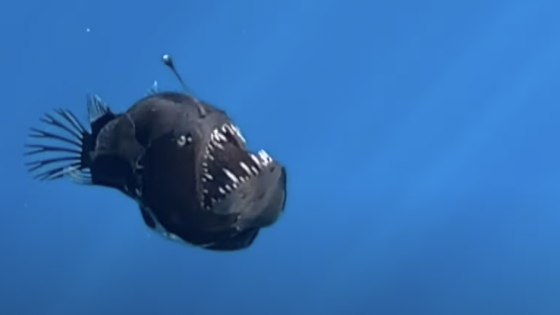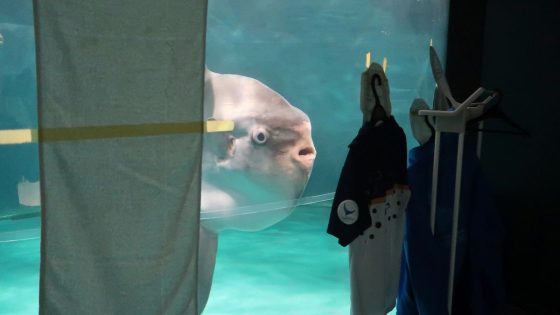A humpback anglerfish, also known as the black seadevil, was spotted alive in broad daylight for what is believed to be the first time on January 26 near the Canary Islands. Researchers from the Condrik Tenerife NGO observed the rare deep-sea creature, which has only been recorded alive once before, nearly a decade ago at a depth of about 2,000 feet.
- Humpback anglerfish seen in daylight for first time
- Only previously recorded alive once before
- Found near Canary Islands on January 26
- Theories suggest reasons for surface appearance
- Fish died hours after being spotted
- Body sent for further study in Tenerife
The fish, measuring approximately 6 inches long, was seen by marine wildlife photographer David Jara Boguna aboard the vessel Glaucus. The sighting has sparked interest among scientists, as the anglerfish typically resides at depths of 6,500 feet or more.
The humpback anglerfish is a rare deep-sea species known for its bioluminescent antenna and sharp teeth. Prior to this sighting, the only known live observation occurred about ten years ago at a depth of nearly 2,000 feet. Bruce Robison, a senior scientist at the Monterey Bay Aquarium Research Institute, noted that seeing such a creature close to the surface is extremely unusual.
Researchers speculate on the reasons for the fish’s appearance at the surface. Possible explanations include being forced upward by volcanic activity, being released by a larger predator, or consuming a fish with a gas gland that caused it to float. Some anglerfish are also known to rise to the surface during El Niño events.
After the sighting, the anglerfish died within a few hours. Its body was collected and sent to Tenerife’s Museum of Nature and Archaeology for further study. Scientists are excited about the discovery, with Rice University fish biologist Kory Evans expressing disbelief upon first viewing the video of the fish.
The sighting of the humpback anglerfish in daylight provides valuable insights into the behavior and habitat of this elusive species. As researchers continue to study the specimen, they hope to uncover more about the anglerfish’s adaptations and ecology.

































